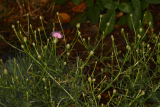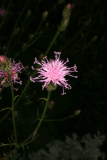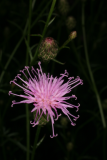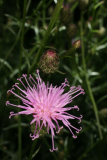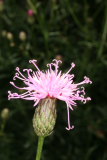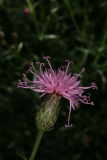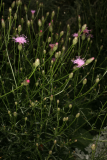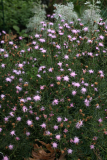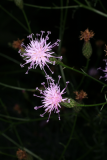Additional notes (click to expand)
Commemorative
Named after Dr Victor Lopez Seoane (1832-1900) a Spanish naturalist and physician who was Professor of Physics, Chemistry and Natural History in Corunna. He attained a certain infamy in that three of the subspecies of birds which he published as new discoveries were in leaflets dated 1870 and 1891 but were actually published in 1894, the discovery of which rendered two of his discoveries attributable to others (Ferrer, in Ingenium 7:345-377 (2001).
Oakeley, Dr. Henry F. (2013). Wellcome Library notes.
link
Nomenclature
Syn.= Serratula shawii
This is a synonym of Serratula tinctoria subsp. seoanei
Plants of the World online, Kew Science http://www.plantsoftheworldonline.org/taxon/urn:lsid:ipni.org:names:878336-1
link
Other use
Serratula tinctoria subsp. seoanei (Willk.)M.Lainz Asteraceae. Saw-wort (in the USA called Dyer's plumeless saw-wort). Distribution: Europe. Named after Dr Victor Lopez Seoane (1832-1900) a Spanish naturalist and physician who was Professor of Physics, Chemistry and Natural History in Corunna. He attained a certain infamy in that three of the subspecies of birds which he published as new discoveries were in leaflets dated 1870 and 1891 but were actually published in 1894, the discovery of which rendered two of his discoveries attributable to others (Ferrer, in Ingenium 7:345-377 (2001). This plant was described by Heinrich Willkomm in 1899 as Serratula seoanei, but M. Lainz, in 1979, decided it was merely a subspecies of Serratula tinctoria, a plant described by Linnaeus (1753). Linnaeus based his description on a plant with a woodcut in Dodoens' Pemptades (1583), saying it had pinnate leaves. However, that woodcut is of two different plants, and when re-used by Gerard (1633) he pointed out that Tabernamontanus (1625) had a woodcut of them and a third plant all with leaves varying from just pinnate to entire. Whatever, the leaves on Serratula tinctorius subsp. seoanei are very distinct, but while pinnate the leaflets are exceedingly narrowly and deeply dissected, Gerard (1633) writes that it is 'wonderfully commended to be most singular [useful] for wounds, ruptures, burstings, and such like...' It is a dye plant, containing luteolin, the same yellow dye as is present in Reseda luteola (source of the dye 'weld'). Seoane also has a viper, Vipera seoanei, named after him; a grasshopper Ephippiger seoanei (now Neocallicrania setigera: Callicrania seoanei is another synonym).
Oakeley, Dr. Henry F. (2013). Wellcome Library notes.
link
Geographical distribution
- Europe, Southwestern Europe
Serratula seoanei
Family: ASTERACEAEGenus: Serratula
Species: seoanei
Distribution summary: S.W. Europe
Habit: Perennial
Hardiness: H5 - Hardy; cold winter
Habitat: Rocky slopes
Garden status: Not currently grown
Flowering months: July, August
Reason for growing: Commemorative, other use
